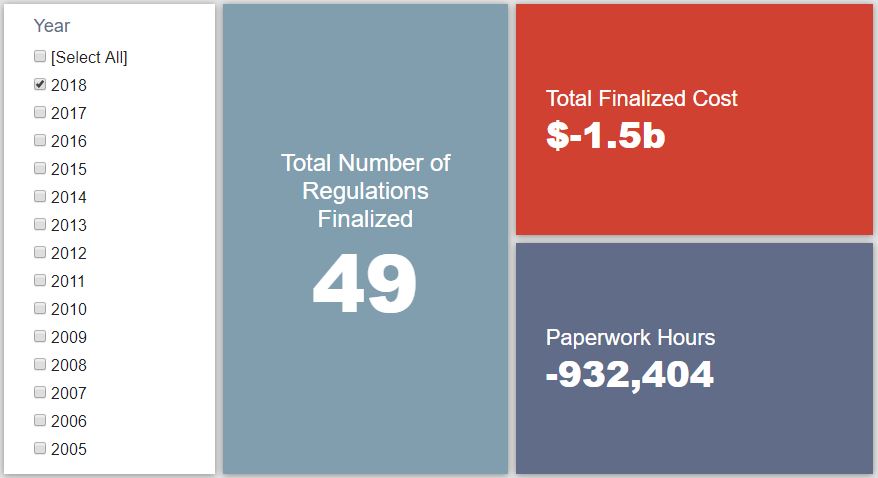Week in Regulation
March 12, 2018
Cost Savings Take Off
Almost all of last week’s quantifiable regulatory activity came from one agency: the Federal Aviation Administration (FAA). Much of FAA’s portfolio involved its typical, routine “Airworthiness Directive” rulemakings, but the highlight of the week was a regulatory relief measure for rotorcraft that could save affected entities up to $385 million. Across both proposed and final rules, agencies published roughly $337 million in net cost savings and 10,220 hours of additional paperwork. The per capita regulatory burden for 2018 is negative $4.49.
Regulatory Toplines
- New Proposed Rules: 31
- New Final Rules: 68
- 2018 Total Pages of Regulation: 10,355
- 2018 Final Rules: -$1.5 Billion
- 2018 Proposed Rules: -$1.2 Billion
Tracking Regulatory Modernization
The one deregulatory action applicable to the “regulatory budget” established under Executive Order (EO) 13,771 was the FAA rule regarding “Rotorcraft Pilot Compartment View.” FAA requires rotorcraft (i.e. helicopters) to certify that certain lighting components won’t produce glare that could impair the pilot’s vision. In the past, this would involve an active night flight test. This rule updates that requirement to allow operators to conduct a ground test instead. FAA finds that a ground test “provides the same level of safety,” and estimates it could save operators $37,280 per test. Overall, this measure could produce roughly $40 million in annualized savings.
According to AAF analysis, since the start of FY 2018 (beginning Oct. 1, 2017), executive agencies have promulgated 24 deregulatory actions with quantified cost savings against five regulatory measures that impose costs, under the rubric created by EO 13,771 and the administration’s subsequent guidance document on the matter. These rules combine for a net annual savings of roughly $684.4 million. The administration’s cumulative goal for FY 2018 is $687 million in net annual savings.
Click here to view AAF’s examination of the administration’s progress under the “one-in, two-out” executive order through the end of Fiscal Year 2017.
State of Major Obama-Era Initiatives
Based on total lifetime costs of the regulations, the Affordable Care Act has imposed costs of $53 billion in final state and private-sector burdens and 176.9 million annual paperwork hours.
Since passage, the Dodd-Frank financial reform legislation has produced more than 82.9 million final paperwork burden hours and imposed $38.9 billion in direct compliance costs.
Total Burdens
Since January 1, the federal government has published $2.7 billion in net costs savings ($1.5 billion from final rules) and new paperwork burdens amounting to 1.3 million hours (however, this includes 932,404 hours cut under final rules). Click here for the latest Reg Rodeo findings.











